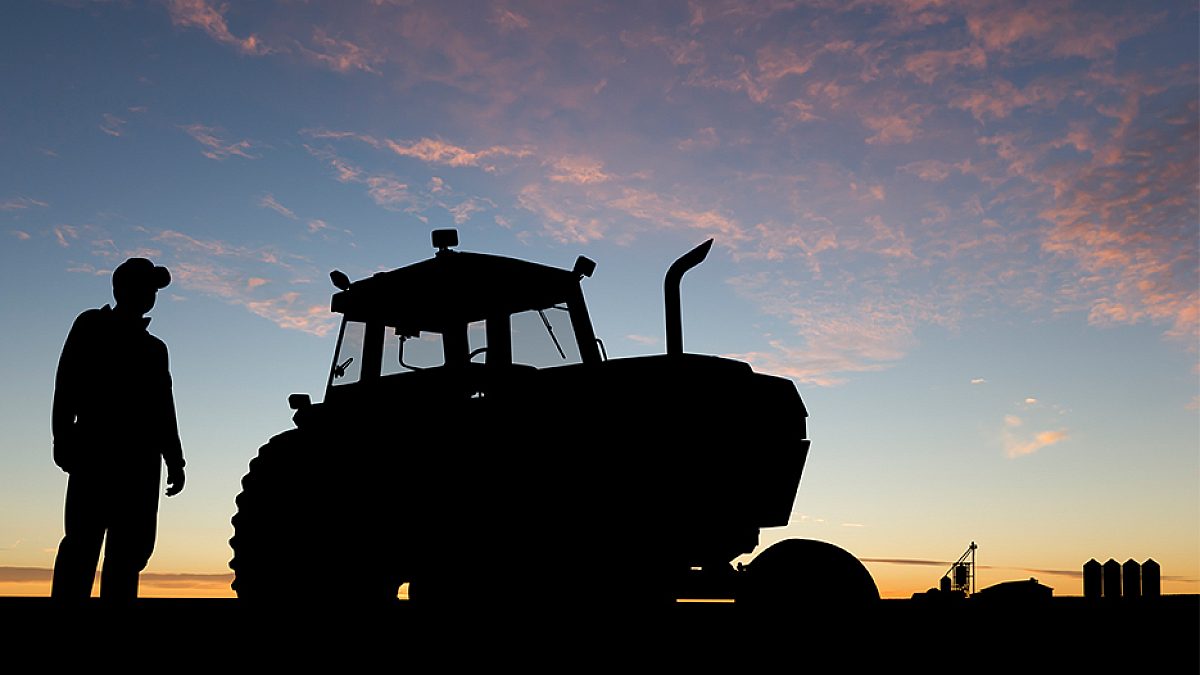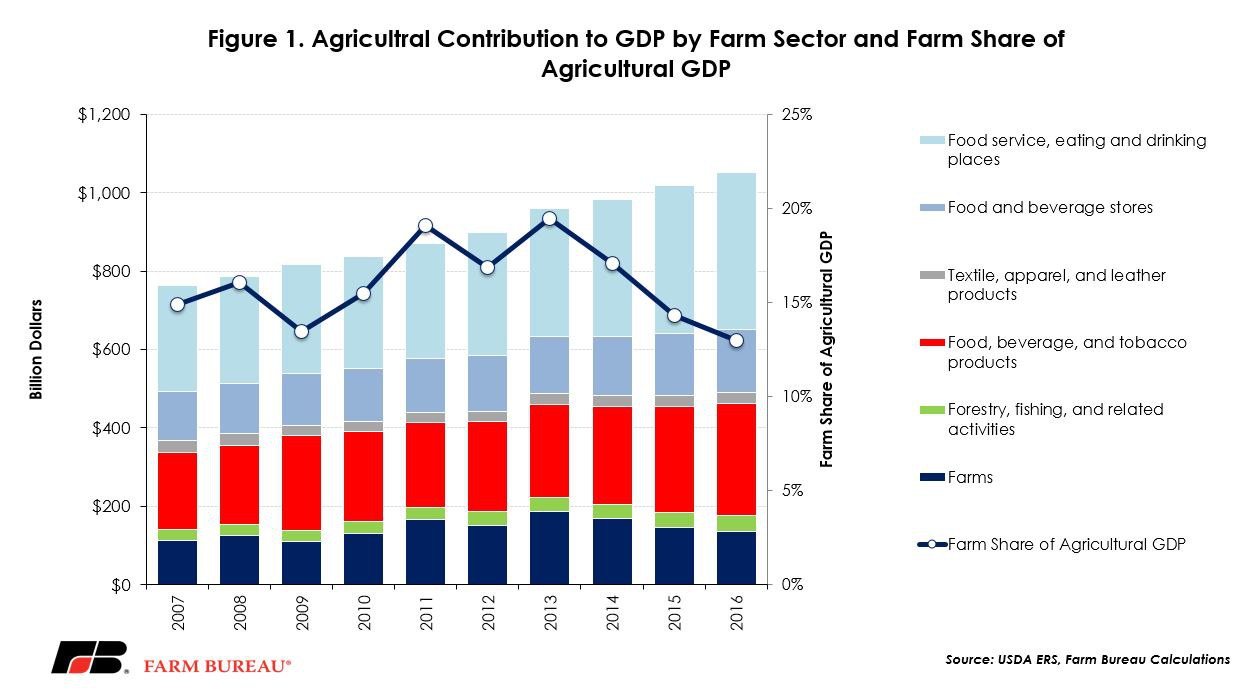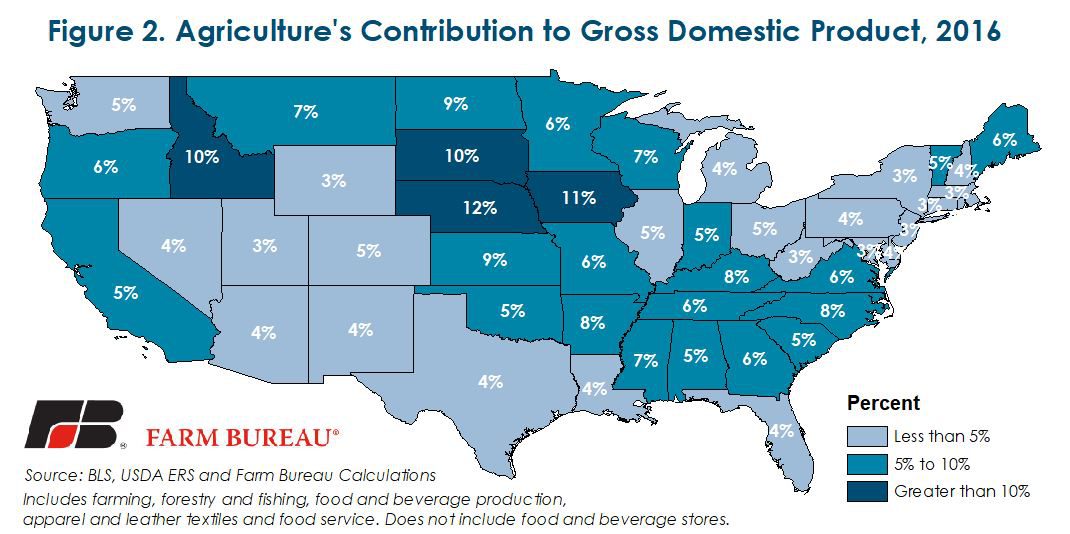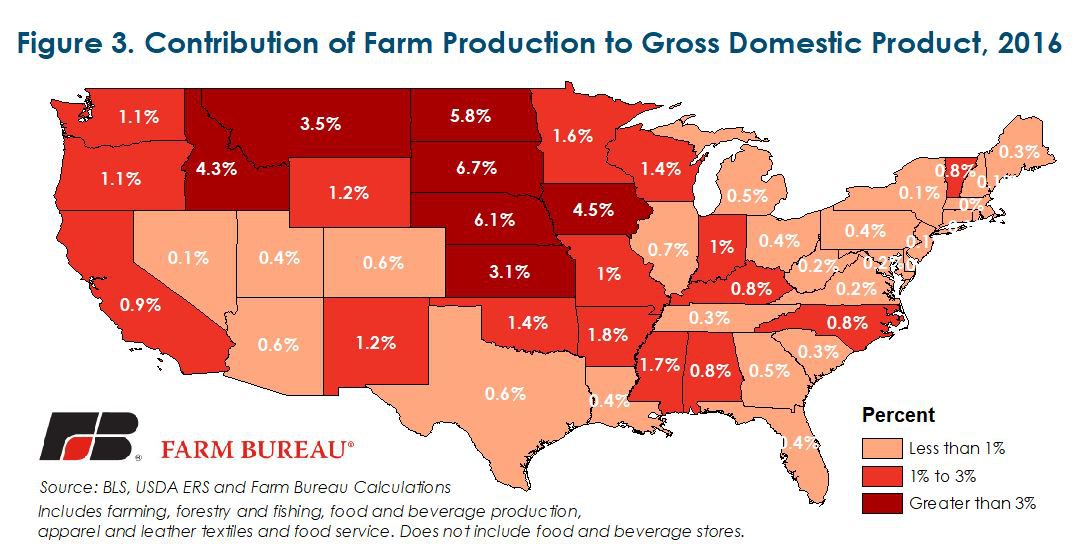Farm Contribution to Agricultural GDP at Record Low
TOPICS
USDA
photo credit: Getty Images
John Newton, Ph.D.
Vice President of Public Policy and Economic Analysis
Data from the Bureau of Economic Analysis’ Value Added by Industry series, recently released by USDA’s Economic Research Service, indicates that – on a broad level – agriculture contributed a record-high $1.05 trillion to U.S. gross domestic product in 2016, up $35 billion, or 6 percent, from the prior year. U.S. GDP in 2016 was $18.6 trillion, thus agriculture’s contribution represented 5.7 percent of the U.S. economy.
However, as a direct result of falling commodity prices, in 2016, the contribution of farm production to U.S. GDP fell to $136.7 billion, down 6 percent from 2015, and the lowest level since 2010. As a share of the total U.S. economy, the farm contribution was less than 1 percent and the lowest level since the series was first recorded in 2007. Importantly, farm-level GDP is down nearly 30 percent from the 2013 record of $187 billion, and after declining for three consecutive years, the farm share of agricultural GDP, at 13 percent, is at the lowest level since the series was first recorded in 2007, Figure 1.
Note: Agricultural contributions to U.S. GDP include farm production, forestry and fishing activities, textile mills and products, apparel and food and beverage sales, service and manufacturing.

While the farm contribution to agricultural GDP is falling, all other agricultural sectors are contributing more to the U.S. economy in 2016 compared to a year earlier. Food service and drinking places contributed $400.7 billion to U.S. GDP in 2016, up $23 billion, or 6 percent, from 2015. Food, beverage and tobacco products contributed $283.7 billion to U.S. GDP in 2016, up $14 billion, or 5 percent, from the prior year. Food and beverage stores contributed $162.9 billion in 2016, up 3 percent compared to 2015. Forestry, fishing and related activities contributed $40.9 billion in 2016, up 4 percent from 2015. Finally, textile, apparel and leather products contributed $27.9 billion to U.S. GDP in 2016, up 1 percent from 2015. Combined, these non-farm portions of the agricultural economy contributed a record $916 billion to U.S. GDP in 2016.
At the state-level, the agricultural contribution to the economy varies. Data from the BEA’s Value Added by Industry series, which does not include food and beverage stores, indicates that the contribution of agriculture to the state economy ranges from a low of 1.9 percent in Washington, D.C., and 2.6 percent in Connecticut to over 10 percent in Nebraska, Iowa, South Dakota and Idaho. In 23 states, agriculture’s contribution to the state economy is greater than 5 percent. Figure 2 highlights the contribution of agriculture to each state’s economy in 2016.

The value of farm production and the contribution to the state economy also varies by state. Nationally, farm production represents 0.07 percent of the U.S. economy, but in 24 states the farm share of the economy is greater than the national average. The farm contribution ranges from a low of 0.04 percent in Alaska (not shown in map) to over 4 percent in the Dakotas, Idaho, Iowa and Nebraska. In South Dakota, the farm contribution to GDP was nearly 7 percent. Figure 3 highlights the contribution of farm output to each state’s economy in 2016. In states where a higher proportion of the economy is based on agricultural output, the downturn in the farm economy has a greater impact. Farmers in those communities have less capacity to generate additional economic activity throughout the state economy.

Summary
During 2018, net farm income is projected to drop to the lowest level in over a decade (Net Farm Income Projected to Drop to 12-Year Low). In addition to falling income, farm debt is record-high and the farm share of the U.S. economy is at the lowest level since the series was first recorded by USDA in 2007. While other sectors of the U.S. economy -- and non-farm portions of the agricultural sector -- continue to improve, farmers are facing increasing financial pressure from low commodity prices. While data on the 2017 and 2018 farm contribution to the U.S. economy is unavailable, it’s safe to project that with commodity prices remaining depressed, the farm share of the U.S. economy will remain at the record-low levels in the coming years.
The downturn in the farm economy means farmers and ranchers have less of an ability to directly generate positive economic activity throughout the state and national economy. Opportunities to reverse this trend and provide more certainty to farmers and ranchers include trade agreements that expand our market access in new and existing markets, and authorizing a farm bill that provides key financial risk management tools so important to the farm economy.
